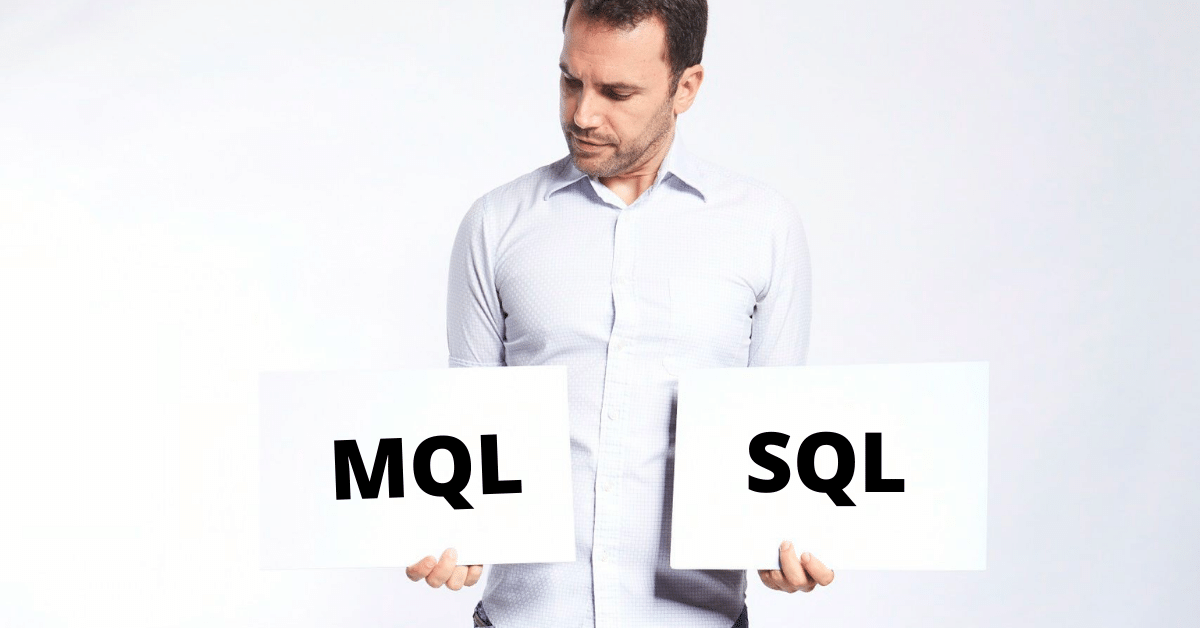
MQL vs SQL, What’s the Difference and how to Qualify?
There are no correct definitions for MQL and SQL. Everyone has their own understanding of the terms. What’s important, though, is to adopt the vision that works for you and ensure that you and your team are on the same page.
I often see teams confused about what MQL and SQL really mean, and part of the reason is that different articles have different definitions for each term. With so many views on defining marketing and sales-qualified leads, getting industry voices to agree on one seems impossible.
There are no correct definitions for MQL and SQL. Everyone has their own understanding of the terms
This is why, from my experience, the best approach is to find the definition which works for you and stick to it. To help you do that, I will share my perspective on what MQL and SQL are and hopefully bring clarity to the two terms.
What is an MQL?
MQL, also known as a marketing-qualified lead, is a lead that, according to the marketing team, has increased chances of becoming a customer. Since marketing requires significant effort and resources, pinpointing what goes into the MQL category is crucial. Good accurate targeting ensures brands expand their marketing communications and spend additional budgets on consumers who have business potential. To put it more visually, this is a laser-focused approach compared to scattershot.
Tracking whether a lead qualifies as an MQL is done by analyzing the engagement level and specific consumer behaviors, to check whether they indicate an interest in the brand’s products or services. This may be done by voluntarily submitting contact information, opting into a newsletter, visiting the site several times a week, or downloading brand-related materials, such as e-books, research presentations, and white papers.
Indicators that a lead is a marketing-qualified lead:
- Repeat website visits within a timeframe.
- Submitting contact information.
- Signing in for newsletters.
- Opening emails from your company.
- Downloading brand-owned content.
- Adding objects to carts.
- Asking questions about products.
- Landing on specific pages.
- Coming from specific high intent campaigns.
- Coming from a particular geo-location.
- Using certain devices.
Even behaviors that might look minute, like scrolling all the way to the bottom of a landing page, could be considered a lead that showed higher than average interest and should be marketed to!
What is an SQL?
Once a potential lead is categorized as an SQL, they will be assigned to a sales account or executive that will get in touch to determine the actual buying potential and, if applicable, walk them through the specific product or solution, emphasizing how they respond to their needs.
Possible indicators that a lead is a sales-qualified lead:
- Opened a marketing email more than a few times (it might show that they forwarded it to other colleagues for their review)
- Requesting to be contacted by a representative.
- Requesting a free demo.
- Requesting a presentation.
- Requesting an offer.
- Left certain combinations of answers upon onboarding.
MQL vs. SQL: Differentiating between the two
While differentiation between marketing and sales qualified leads is crucial, the right strategy goes beyond MQL vs. SQL. Understanding that these are both sales pipeline stages increases your team’s chances of blending marketing and sales into a successful strategy that delivers.
Differentiating MQL from SQL is essential for businesses because it optimizes their marketing and sales efforts, generating more ROI.
Lead Score
Lead Behavior
Likelihood to Buy
Turning MQL vs. SQL into MQL and SQL
- ROAS not showing on Facebook Ads? Here’s what to do.
- How to Generate Leads for Your Business in 2024 [UPDATED]
- The Art of Measurement: Evaluating Sales Content Performance
- Content Marketing Performance: Metrics That Matter in Driving Success
- Measure and Improve: The Ultimate Guide on How to Track Content Performance
Recent Posts
- ROAS not showing on Facebook Ads? Here’s what to do.
- How to Generate Leads for Your Business in 2024 [UPDATED]
- The Art of Measurement: Evaluating Sales Content Performance
- Content Marketing Performance: Metrics That Matter in Driving Success
- Measure and Improve: The Ultimate Guide on How to Track Content Performance


